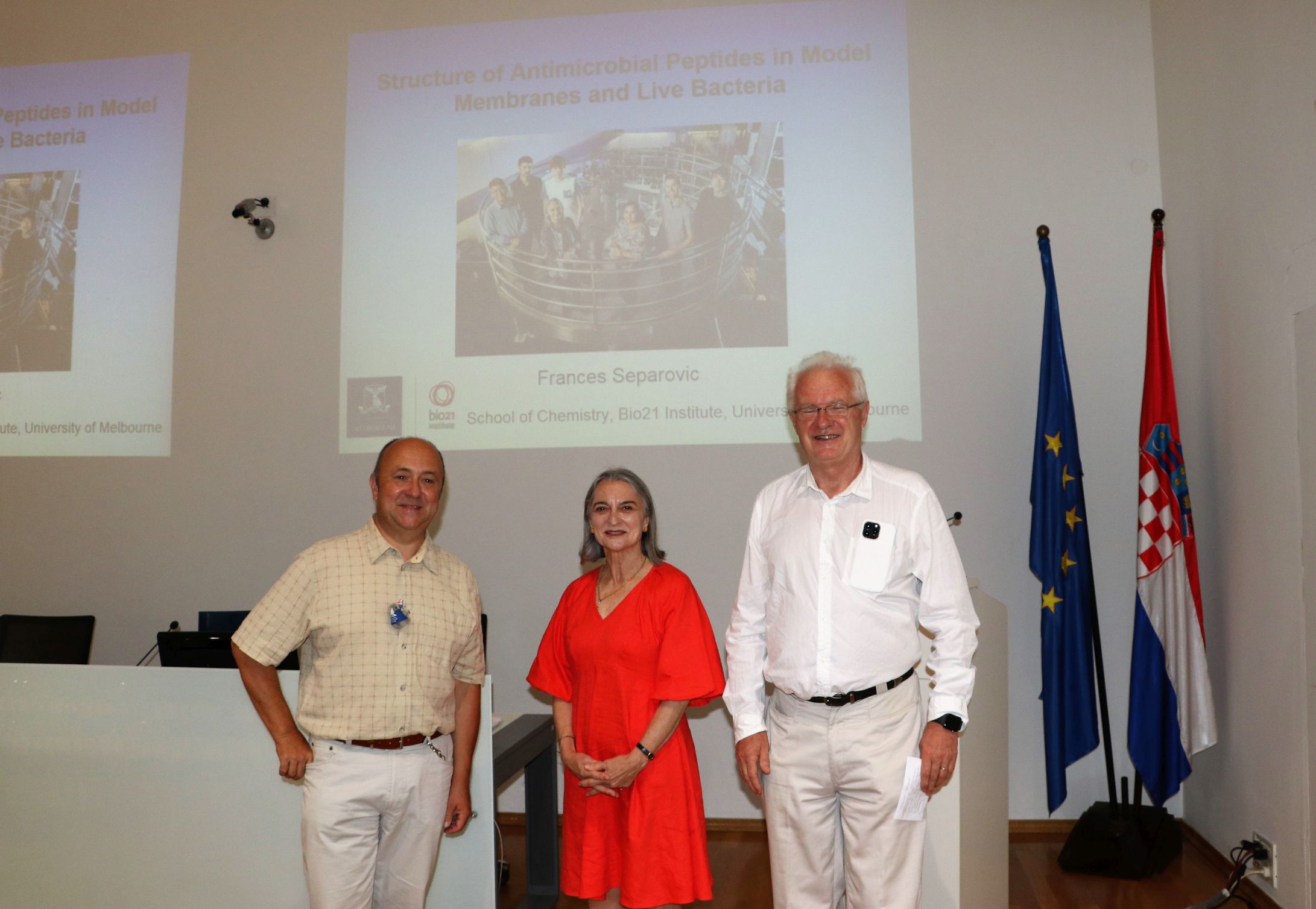
STRUCTURE OF ANTIMICROBIAL PEPTIDES IN MODEL MEMBRANES AND LIVE BACTERIA predavanje prof. emer. Frances Separovic
HRVATSKA AKADEMIJA ZNANOSTI I UMJETNOSTI
RAZRED ZA MATEMATIČKE, FIZIČKE I KEMIJSKE ZNANOSTI
Odbor za kemiju
organizira i poziva Vas na predavanje koje će održati
Distinguished Professor Emeritus Frances Separovic AO FAA, School of Chemistry, Bio21 Institute, University of Melbourne, Australia
STRUCTURE OF ANTIMICROBIAL PEPTIDES
IN MODEL MEMBRANES AND LIVE BACTERIA
Srijeda, 12. srpnja 2023. u 11 sati
Knjižnica HAZU, Trg Josipa Jurja Strossmayera 14
Antimicrobial peptides (AMPs) have been extensively studied as promising alternatives to traditional antibiotics. Solid-state NMR has been used to characterise their effect on lipid bilayers, their primary target. Such studies are important to provide high-resolution details within a model system but correlation with in vivo situations remains speculative, especially in view of the complex modulation observed with slight changes in conditions such as pH, temperature, lipid composition or peptide concentration. Studying AMPs in live bacteria is, therefore, important but presents several challenges, such as sensitivity and bacterial lifetime. Studies of AMPs in model membranes and in live E. coli or S. aureus bacteria using solid-state NMR techniques will be presented. The impact of the AMP maculatin 1.1 (Mac1) on bacteria was monitored by 31P while structural details on the peptide were obtained using dynamic nuclear polarization (DNP) enhanced 13C and 15N solid-state NMR experiments. Finally, a novel strategy was established using spin-labelled AMPs to perform in-cell DNP NMR experiments and {15N}13C REDOR experiments used to measure the distance between several pairs of 13C=O and 15NH within the Mac1 amino acid sequence, which indicate a transmembrane helical structure in bacteria.